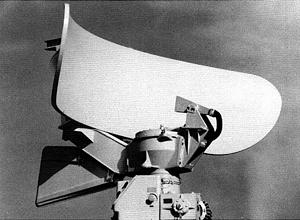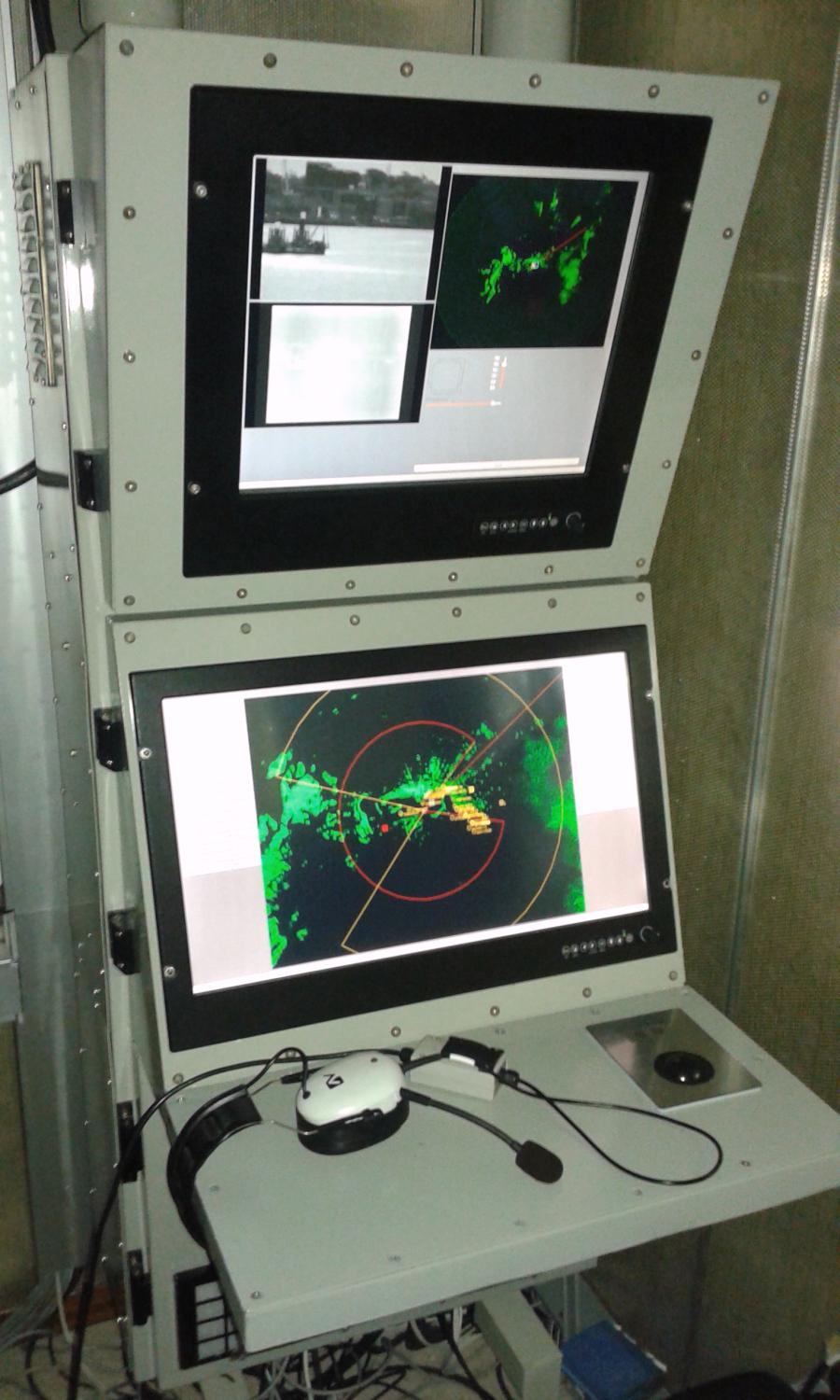TRS 3050 (Triton G)
Description of the radar set, tactical-technical characteristics

Figure 1:
| Specifications | |
|---|---|
| frequency: | G-Band |
| pulse repetition time (PRT): | |
| pulse repetition frequency (PRF): | |
| pulsewidth (τ): | |
| receive time: | |
| dead time: | |
| peak power: | |
| average power: | |
| instrumented range: | 19 km |
| range resolution: | |
| accuracy: | |
| beamwidth: | θε= 22° |
| hits per scan: | |
| antenna rotation: | 40 rpm |
| MTBCF: | |
| MTTR: | |
TRS 3050 (Triton G)
TRS 3050 (Triton G) is a G-Band air and search surveillance and target designation radar. It is designed for ships of 150 tons upwards to perform air and surface surveillance, low and very low altitude missile detection, target designation to weapon systems, and emergency navigation under adverse conditions.
Triton G is a fully coherent synthesiser driven radar, with two receiver channels: one channel is dedicated for air surveillance: with digital Doppler processing (Fast Fourier Transform), pulse compression, burst-to-burst frequency agility, automatic tracking and initialisation of targets; the second channel is dedicated for surface surveillance: with pulse compression, pulse-to-pulse frequency agility, and advanced anti-clutter and anti-jamming processing. Triton G employs the normal radar reflector of the Triton series of radars but can be fitted with other antennas. Most of the operational advantages are the result of advances in transmitter/receiver and processor design.
This radar is no longer in production but still in service around the world. There is a modernization program available from the Serbian company Horizon Systems Workshop. Main tasks are design, develop and production of radar video processing (video conversion to digital, image conversion, presentation over PC based screen, plot detection, track initiation, filtering, prediction), graphical user interface (GUI), ballistic calculations for artillery fire control systems, interface to: ship cannons, ship to ship missile systems, ship torpedo systems.

